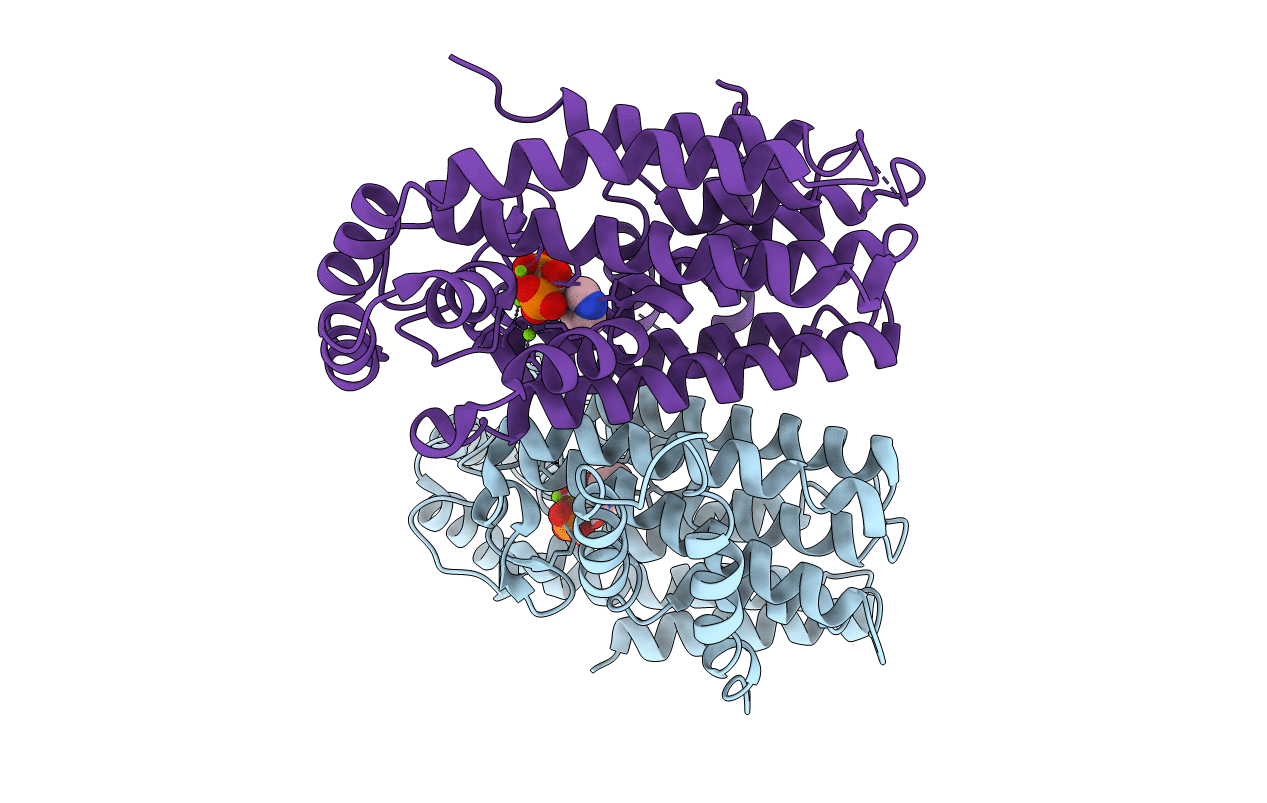
Deposition Date
2007-05-31
Release Date
2007-06-12
Last Version Date
2023-08-30
Entry Detail
PDB ID:
2Q58
Keywords:
Title:
Cryptosporidium parvum putative polyprenyl pyrophosphate synthase (cgd4_2550) in complex with zoledronate
Biological Source:
Source Organism:
Cryptosporidium parvum (Taxon ID: 353152)
Host Organism:
Method Details:
Experimental Method:
Resolution:
2.37 Å
R-Value Free:
0.23
R-Value Observed:
0.21
Space Group:
P 31


